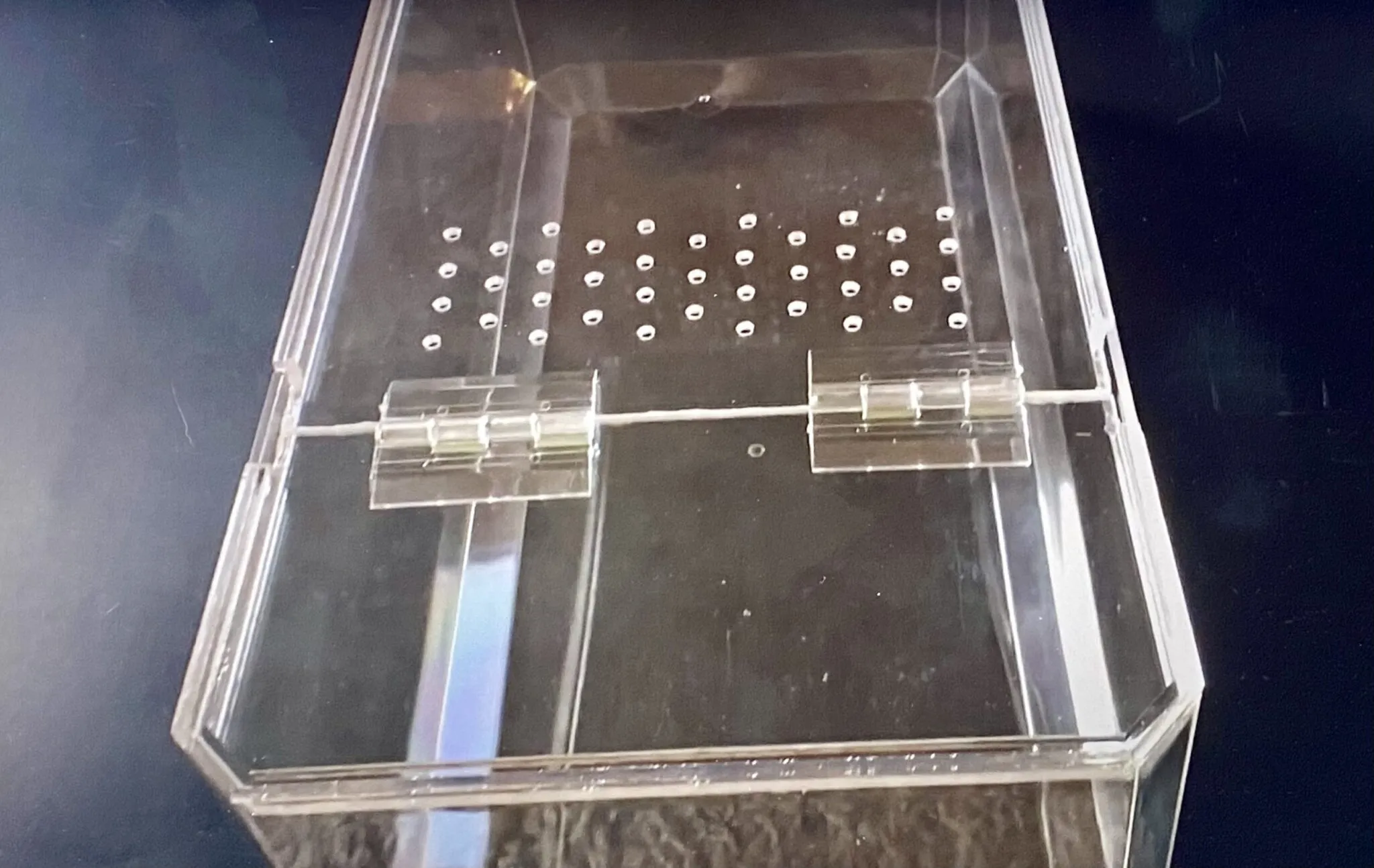Tarantula Enclosure Best [Guide]
Creating the best tarantula enclosure is crucial for the health and well-being of your eight-legged friend. A well-designed habitat replicates their natural environment, providing the necessary conditions for them to thrive. This comprehensive guide will walk you through everything you need to know, from choosing the right size and materials to maintaining optimal humidity and temperature levels. We’ll also delve into the importance of ventilation, the role of a fan, and the best practices for feeding and watering your tarantula. Whether you’re a beginner or an experienced keeper, this guide will help you create the perfect home for your tarantula.
Selecting the Right Enclosure Size
Choosing the correct enclosure size is the first and most important step. An enclosure that is too small can restrict movement and lead to stress, while one that is too large can make it difficult for your tarantula to find food and feel secure. The size of the enclosure should be proportional to the size of the tarantula, considering both the terrestrial and arboreal species, each with different needs. This ensures the tarantula has enough space to move around, hunt, and hide, reducing stress and promoting a healthy lifestyle. A properly sized enclosure is fundamental to a thriving tarantula.
Determining Tarantula Size
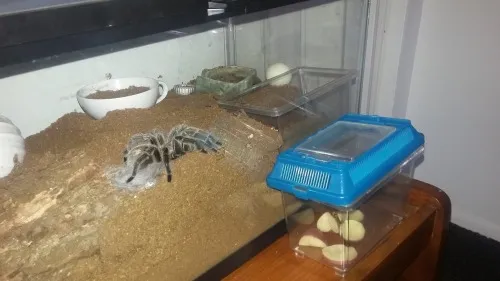
Before purchasing an enclosure, accurately estimate your tarantula’s size, considering its leg span. This is crucial, especially for juvenile tarantulas that will grow. Use the tarantula’s leg span as a primary measurement. Also, consider the species, as some tarantulas are terrestrial (ground-dwelling) and others are arboreal (tree-dwelling). Terrestrial species need more floor space, while arboreal species require more vertical height for climbing. This understanding will help you in selecting an enclosure with appropriate dimensions, ensuring the spider has enough space to move and feel secure, which is vital for its health.
Enclosure Dimensions
The general rule for terrestrial tarantulas is that the enclosure should be at least twice the spider’s leg span in width and length. For arboreal species, the height is more important, with the enclosure needing to be at least three times the tarantula’s leg span in height. Ensure the enclosure has adequate ventilation and is escape-proof. Consider the adult size of the tarantula. Starting with a smaller enclosure and upgrading as the tarantula grows is often more practical, as it prevents the spider from feeling overwhelmed in a space that is too large for its current needs. Be sure that the enclosure is escape-proof and has a secure lid.
Essential Materials for Enclosures
The material of your tarantula enclosure significantly impacts its suitability. Glass and acrylic are the most common options, each with its own advantages and disadvantages. Both materials offer good visibility, allowing you to easily observe your tarantula. The key is to select a material that is safe, durable, and provides the necessary environment for your tarantula to thrive. The choice depends on factors like ease of maintenance, insulation, and the specific needs of the tarantula species.
Glass Enclosures Pros and Cons
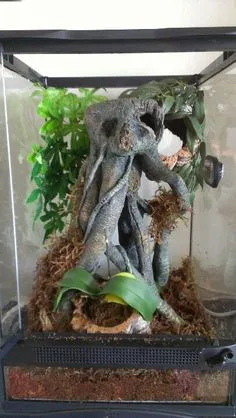
Glass enclosures are a popular choice due to their clarity and scratch resistance. They are also relatively easy to clean and maintain. However, glass can be heavier than acrylic, and it offers less insulation, which can make it more challenging to regulate temperature and humidity. Glass can also be more prone to condensation, which requires careful ventilation management. Although aesthetically pleasing and durable, their thermal properties require a vigilant approach to environmental control, often necessitating the use of fans for proper ventilation and to prevent the build-up of excessive humidity.
Acrylic Enclosures Pros and Cons
Acrylic enclosures are lighter and provide better insulation than glass. They are less prone to condensation and offer excellent visibility. Acrylic is also more resistant to cracking than glass, making it a safer option. However, acrylic is more susceptible to scratches and can be more expensive. They are also easier to customize, such as drilling holes for ventilation and fan mounting, offering greater flexibility in setting up the ideal tarantula habitat. The insulating properties of acrylic can also help maintain more stable temperature and humidity levels, often making them a good option to maintain optimal environmental conditions.
Ventilation Importance
Proper ventilation is critical for a healthy tarantula enclosure. It helps regulate humidity, prevents the buildup of harmful gases, and reduces the risk of mold and mildew. Adequate airflow ensures the enclosure doesn’t become a breeding ground for bacteria and fungi, which can be detrimental to the tarantula’s health. Poor ventilation leads to stagnant air, increasing the likelihood of respiratory issues and other health problems. Integrating a fan into the enclosure setup is often essential to maintaining good air circulation and a healthy environment.
Fan Placement and Types
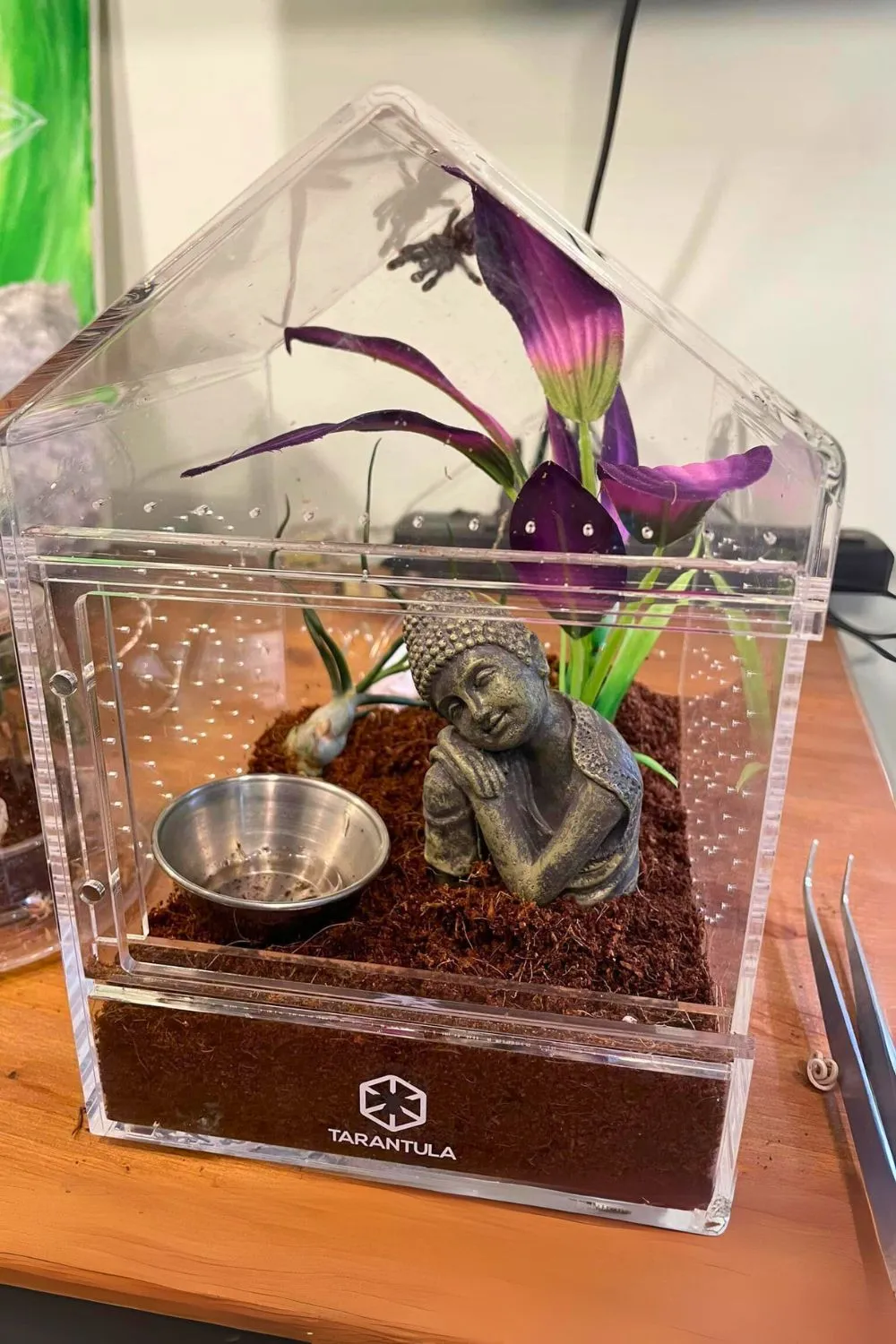
The placement and type of fan are crucial for effective ventilation. Small computer fans are commonly used due to their affordability and availability. Place the fan near the top of the enclosure to remove stale air and prevent the build-up of excessive humidity. The fan should create a gentle airflow, not a strong wind, which can stress the tarantula. Consider using fans designed for computer cooling, as they come in various sizes and can be easily integrated into most enclosures. Ensure the fan is securely mounted and positioned to circulate air effectively without causing drafts or disturbing the substrate.
Setting Up a Ventilation System
When setting up a ventilation system, consider the size of the enclosure and the species of tarantula. For smaller enclosures, a single, low-powered fan might suffice. For larger enclosures or those housing species that require higher humidity, you might need to use multiple fans or a more powerful system. The fan should be placed to draw air out of the enclosure, typically near the top, while providing an intake source, usually through cross-ventilation in the enclosure lid or side. This setup promotes a continuous air exchange, maintaining a healthy environment.
Choosing the Right Fan
Select a fan with the appropriate airflow rate (CFM - Cubic Feet per Minute) for your enclosure size. Too much airflow can dry out the enclosure, while too little will be ineffective. Look for fans that are quiet, as tarantulas can be sensitive to noise. Consider fans with variable speed controls to adjust the airflow as needed, based on the environmental conditions. The fan’s power consumption is another important factor to consider. Choose an energy-efficient fan to save energy and reduce operating costs. The right fan is crucial in maintaining a stable and healthy environment, promoting the overall well-being of your tarantula.
Humidity and Temperature Control

Maintaining the correct humidity and temperature levels is essential for a tarantula’s health. These factors directly impact the tarantula’s ability to molt, its activity level, and its overall well-being. The specific requirements will vary based on the tarantula species. It is important to research the natural habitat of your tarantula and try to replicate those conditions. Monitoring tools like hygrometers and thermometers are useful to track levels, but the proper integration of these levels is vital for tarantula health.
Maintaining Ideal Humidity Levels
Humidity levels can be controlled by the amount of ventilation, the type of substrate, and the frequency of misting. Most tarantulas require humidity levels between 60-80%, but this range varies significantly by species. Use a hygrometer to accurately measure the humidity. To increase humidity, mist the enclosure with dechlorinated water, especially during the molting process. To decrease humidity, increase ventilation, potentially using a fan. Proper humidity prevents the tarantula from drying out and promotes a healthy molt, and integrating a fan aids this process by controlling the moisture content inside the enclosure.
Monitoring Temperature Levels
Temperature is another crucial factor. Most tarantulas thrive in temperatures between 70-80°F (21-27°C). Use a thermometer to monitor the temperature inside the enclosure. Avoid placing the enclosure in direct sunlight or near heat sources that can cause temperature fluctuations. If the temperature is too low, you might need to use a heat lamp or a heat mat, ensuring you maintain a safe distance to prevent overheating. Using fans can also help regulate temperature, especially in environments with higher ambient temperatures, by promoting airflow and preventing heat buildup.
Substrate and Decoration
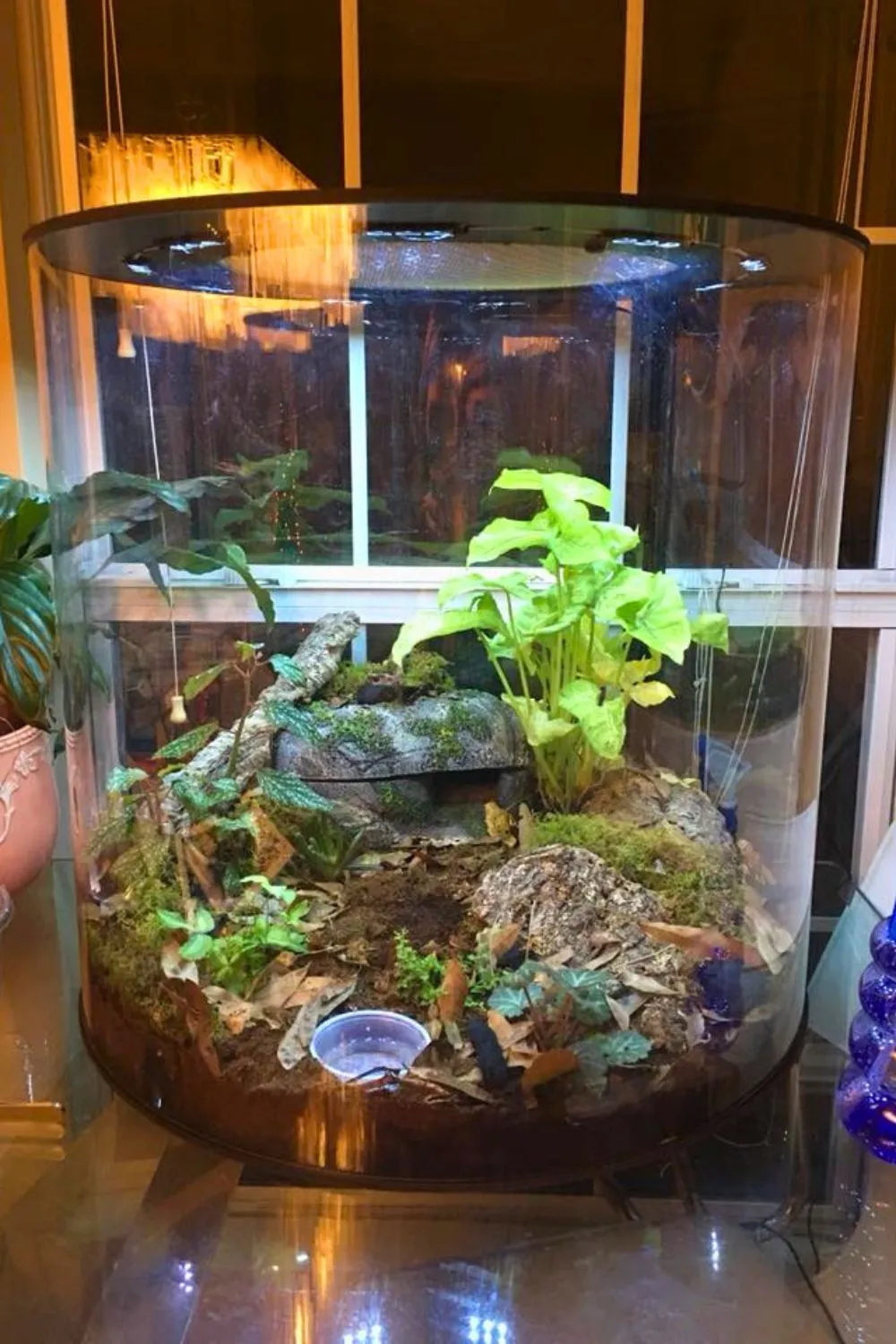
The substrate and decor provide a comfortable and stimulating environment for your tarantula. The substrate helps maintain humidity, provides a surface for the tarantula to burrow, and aids in molting. Decorations provide hiding places and enrich the environment. The substrate should be deep enough for the tarantula to burrow if it is a species that does so.
Optimal Substrate Choices
The best substrates are those that retain humidity without molding easily. A mix of coconut fiber, peat moss, and vermiculite is a popular choice. Coconut fiber is excellent for moisture retention and is readily available. Peat moss is also a good option, but it can be more acidic. Vermiculite helps aerate the substrate, preventing it from compacting. Avoid substrates like sand or gravel, as they do not retain humidity well and can be difficult to burrow in. The depth of the substrate should be proportional to the size and needs of the tarantula.
Enclosure Decor and Hiding Spots
Decorations enhance the tarantula’s environment and provide security. Include items like cork bark, driftwood, artificial plants, and hides. These items provide hiding spots, which reduce stress, and encourage the tarantula to exhibit natural behaviors. Ensure that all decorations are secure and cannot fall on the tarantula. Avoid using sharp or abrasive decorations. The decor should replicate the tarantula’s natural habitat, making it feel safe and secure. A well-decorated enclosure increases your tarantula’s quality of life, promoting a healthy and stress-free existence. The fan aids the process in making the decor area safe.
Best Fan Recommendations
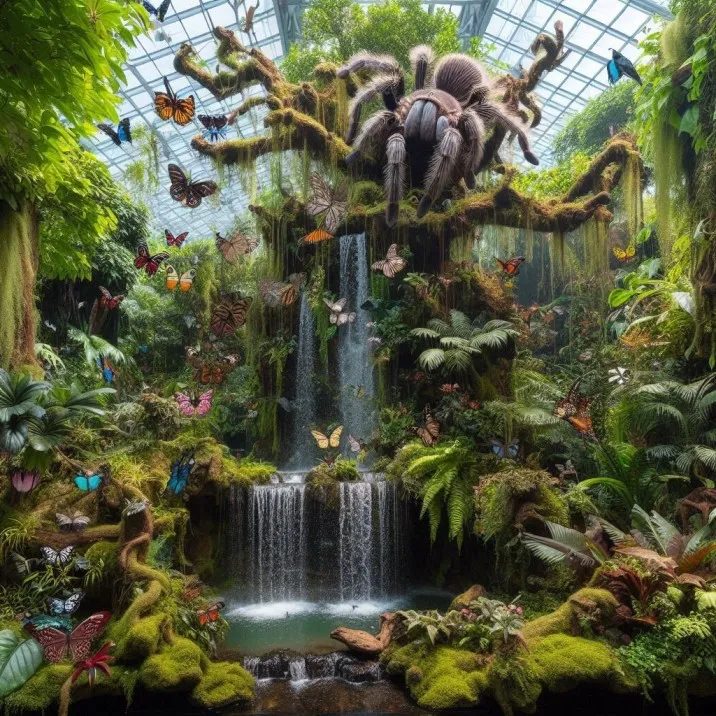
Several fan models are well-suited for tarantula enclosures. The specific model you choose will depend on the size of your enclosure and your budget. Look for small, quiet computer fans, as they are generally effective and easy to install. Consider fans with adjustable speeds to fine-tune the airflow according to your needs. Research reviews to find the most reliable and effective options. Also, consider the power source; some fans can be powered by USB, which is convenient. When choosing a fan, prioritize quiet operation, adjustability, and reliability to ensure the tarantula’s habitat remains optimal. Always ensure that any electrical components are safely installed and shielded from moisture.
Top Fan Models for Tarantulas
Several brands offer suitable fans for tarantula enclosures. Noctua, Arctic, and Cooler Master are popular choices, known for their quiet operation and efficiency. Check the fan’s CFM rating and select a model appropriate for your enclosure size. For smaller enclosures, a fan with a lower CFM rating will suffice, while larger enclosures will benefit from a higher CFM. Always consider the noise level; the quieter the fan, the better. When selecting a fan, consider factors like ease of installation and the fan’s overall build quality. Some fans come with features like vibration dampeners and speed controllers.
Fan Maintenance and Cleaning
Regular maintenance ensures your fan operates efficiently and prolongs its lifespan. Inspect the fan regularly for dust and debris. Dust can reduce the fan’s efficiency and cause it to overheat. Clean the fan blades and the fan housing with a soft brush or a can of compressed air. Avoid using water or harsh chemicals, which can damage the fan. If the fan has a removable filter, clean or replace it as needed. Regularly checking and maintaining your fan ensures that your tarantula enclosure maintains optimal ventilation and humidity, thereby promoting the spider’s health. A clean, well-maintained fan contributes significantly to creating a healthy and comfortable environment.
Feeding and Watering
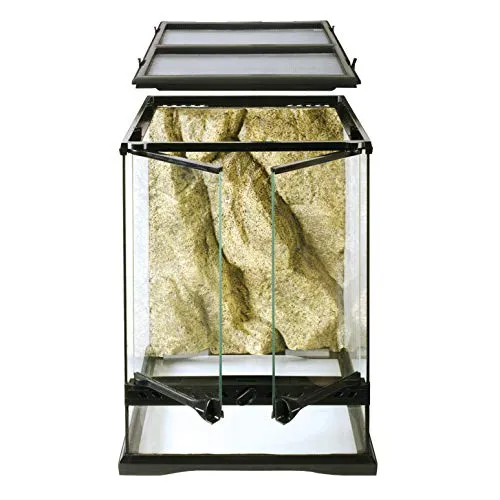
Proper feeding and watering are crucial for the health and growth of your tarantula. Providing the right food and water ensures your tarantula receives the necessary nutrients and stays hydrated. The frequency and type of feeding will vary based on the tarantula’s age and species. Always provide fresh, clean water to prevent dehydration. Also, the fan is very important in keeping the air clean and fresh for your tarantula.
Proper Feeding Practices
Tarantulas primarily eat insects. Crickets, mealworms, and roaches are common food sources. The frequency of feeding depends on the tarantula’s age and size. Juvenile tarantulas require more frequent feeding than adults. Avoid feeding your tarantula prey that is larger than its abdomen. Remove any uneaten food to prevent mold and mites. Make sure the prey is appropriately sized for your tarantula. Feeding is an essential aspect of tarantula care. Providing a variety of insects ensures a balanced diet. The size of the prey should be appropriate to your spider’s size, and removal of uneaten food helps to maintain a clean enclosure, which the fan aids in doing.
Water Source and Hydration
Always provide your tarantula with a constant supply of fresh water. Use a shallow water dish to prevent the spider from drowning. Fill the water dish with fresh, dechlorinated water. Check the water dish regularly and refill it as needed. For smaller tarantulas, you can provide water by misting the enclosure. Hydration is critical for a tarantula’s health, especially during molting. Providing a reliable water source ensures your tarantula can stay hydrated and healthy. The fan helps in keeping the air dry, which aids in keeping the humidity level ideal for the tarantula.
Troubleshooting Common Issues
Even with the best care, you might encounter some common issues. Knowing how to address these problems will help you keep your tarantula healthy and happy. Mold, overheating, and mites are common problems that can be addressed by understanding the underlying causes and taking the appropriate steps. It is essential to identify and resolve issues promptly to prevent the problems from escalating.
Addressing Mold and Mildew
Mold and mildew can develop in enclosures with high humidity and poor ventilation. To address this, improve ventilation using a fan. Remove any moldy substrate and replace it with fresh material. Ensure that the enclosure is not too humid. Regularly check the enclosure for signs of mold or mildew. If the issue persists, you might need to adjust your watering and ventilation practices, and also ensure the enclosure has proper lighting. Mold and mildew can harm your tarantula, so addressing the problem immediately is essential.
Handling Overheating
Overheating can be dangerous for tarantulas. To prevent overheating, avoid placing the enclosure in direct sunlight or near heat sources. If the enclosure is getting too hot, move it to a cooler location. Increase ventilation, possibly using a fan. Ensure that the temperature remains within the safe range for your tarantula species. If you use a heat lamp or heat mat, make sure that it has a thermostat to prevent overheating. Overheating can lead to dehydration and stress, so it is very important to address the issue quickly.
Conclusion
Creating the best tarantula enclosure is a journey that requires careful planning and consistent maintenance. By selecting the right enclosure size, choosing appropriate materials, maintaining optimal temperature and humidity levels, providing adequate ventilation, and understanding proper feeding and watering practices, you can create a thriving habitat for your tarantula. Remember to research the specific needs of your tarantula species and adjust your setup accordingly. Regular monitoring and maintenance are crucial for the long-term health and happiness of your tarantula. By following this guide, you’re well on your way to providing your tarantula with a safe, comfortable, and enriching environment. The integration of a fan is very important in the process, as the fan promotes airflow and regulates the enclosure’s environment.
